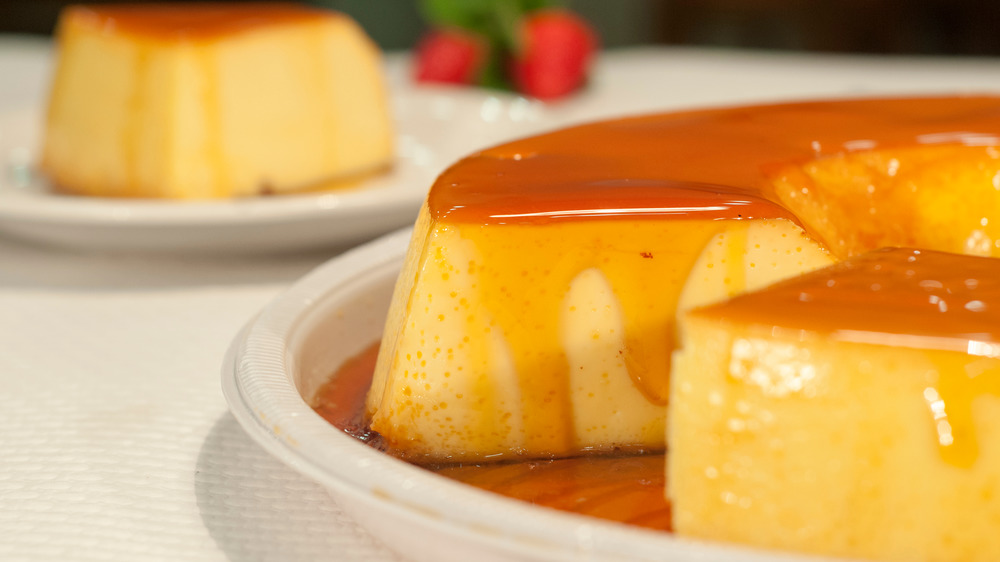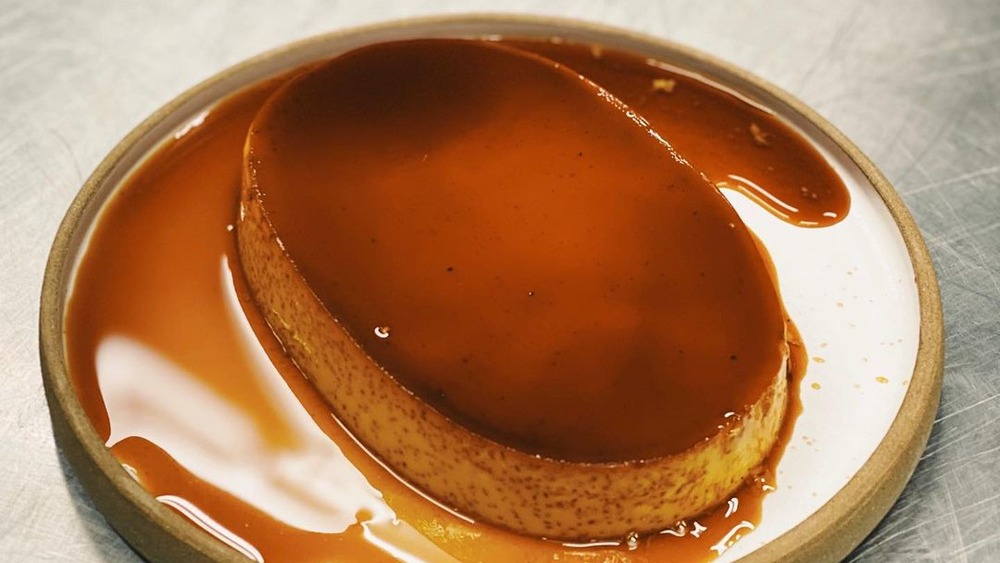The Real Difference Between Mexican Flan And Filipino Flan
Flan, that rich, custardy dessert made with milk, eggs, and caramel, is a gift from the Latin food gods to the world. While it might start out with the same ingredients, there is a world of difference between a flan and its cousins, creme brulee and crema Catalana. In a piece for Serious Eats, Sohla El-Waylly poetically describes a flan as starting with a caramel, where "Caramelized sugar syrup is poured into a dish and dangerously swirled around to coat the bottom in a shimmering golden shell. A custard is then poured on top and, while baking in the oven, it dissolves the caramel shell into a sauce. The sauce waits patiently under the tender custard until you ultimately flip out the flan, or dig in with a spoon to find the glittering pool."
A dish with roots in ancient Rome, according to The Daily Slice, flan made its way to Spain and from Spain to Latin America. Given the Philippines' geographic location, which could be legitimately considered the other side of the world from Latin America, you might wonder how Filipino flan and Mexican flan could even be remotely similar. The answer lies in the Philippines' past. Because the Philippines was a Spanish colony from 1521 to 1898, it picked up more than just religion – it also absorbed Spanish customs and its culture. Most of the country's signature dishes, from roast pork or Lechon to embutido (a Filipino meatloaf named after a Spanish sausage) to churros and flan.
Mexican and Filipino flans are not identical
While the Mexican flan and the Filipino flan have nearly identical ingredients, and the caramel that decorates the top of the flan is prepared in the same way, the flans are cooked quite differently. Mexican flans also make use of whole eggs while Filipino flans use plenty of egg yolks, making for a more dense dessert (via Feast magazine).
Once the caramel for the Mexican flan is prepared and the custard is poured on top of the dessert, it is poured into a flan pan also known as a flanera and baked in the water bath. Cocina Marie recommends a baking time of 1 hour and 15 minutes in an oven set to 350 degrees Fahrenheit. The recommended flanera comes with a lid so the flan also cooks in its own steam, while Sohla El-Waylly says a foil or plastic wrap cover to keep a skin from forming on the custard will do the trick.
Unlike its Mexican kin, Filipino leche (or milk) flans are steamed. They can be prepared in single-serve ramekins or in a shallow pan to but cut into wedges or squared before it is served (via The Spruce Eats). Filipino leche flan stands well on its own – but it shines as part of another classic Filipino iced dessert: the halo-halo, a colorful mixture of preserved fruits served with shaved ice and topped with a slab of flan and ube ice cream for added decadence.

